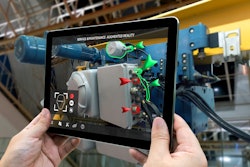There’s no shortage of manufacturing problems in our modern society, from supply shortages to distribution problems and an ever-fluctuating economy. With all of these problems, it can seem like a miracle that we’re ever able to get things done in a landscape in which everything is against us.
The good news is that a problem shared is a problem halved, and so as long as you know what to look out for, you can take steps to avoid it – or at least to meet the problem head on with a solution.
And so with that in mind, we’ve created this list of the six major challenges that modern manufacturing companies must overcome if they’re to be successful in business. Let’s get started.
No. 1 - The Chinese Invasion
One of the biggest developments in the manufacturing industry in recent years is the Chinese invasion. In 2011, the country broke a 100-year run for the United States to become the world’s largest manufacturing nation. As the country continues to develop, it won’t be long until the Chinese stranglehold is impossible to shake off. The good news is that for this challenge manufacturing companies can get ahead of the curve by outsourcing some of their manufacturing to China.
No. 2 - 3D Printing
3D printing can be both a problem and a solution for the manufacturing industry. It allows for more rapid prototyping and also for customization between products. For example, if your company manufactured prosthetics, 3D printing would allow you to customize each prosthetic based upon a scan of the patient’s limbs. Traditional manufacturers might struggle to keep up – or they could integrate 3D printing into their own workflow and turn it into an advantage.
No. 3 - Artificial Intelligence
Global spending on AI is set to grow to $7.3 billion per year by 2022, and the technology will influence every industry on the planet. The manufacturing industry will only be the beginning. The good news is that while it can be difficult to initially wrap your head around it, the technology could help to drive huge efficiencies, ultimately helping you to save money and boost profits.
No. 4 - Cybersecurity
Cybersecurity is something that we’ll all have to get used to thinking about as more and more devices are hooked up to the internet. For manufacturers, the production line is increasingly being automated via the internet of things, but while this does have its advantages, it also has its drawbacks. Manufacturers could even become targets in the event of a cyber war, especially if they’re producing vital components for infrastructure or for the military.
No. 5 - Labor Shortage
According to Deloitte, nearly 2.4 million manufacturing jobs will go unfulfilled over the next decade. Automation could help to fill some of the shortfalls, but manufacturing companies are still likely to face stiff competition when it comes to hiring top talent. The only real way to combat this is to make sure that your company is seen as one of the best employers in the industry.
No. 6 - Scalability
One final challenge will be for companies to scale up and down as required. To do this, they’ll need to make sure that their infrastructure is as flexible as possible, and it’s also worth considering tapping into the gig economy and using temporary workers if it’s going to help you to scale up and down to meet demand on the production line. Flexibility is–and will continue to be–key.
Conclusion
Now that you know what the future is set to bring for modern manufacturing companies, it’s over to you to take steps to make sure that you’re ready to meet it. Luckily, as long as you know what the challenges are going to be, it’s not too difficult to reposition your company so that you take the challenge and turn them into an opportunity.
The companies that succeed will be those which are able to move the quickest and to anticipate changes instead of just reacting to them. When you can anticipate these changes, you can help to guide the direction of their development and be ahead of the market. Ultimately, this advantage can mean all of the difference between you and the competition. Good luck.
Jeff Blaylock is a freelance writer.























